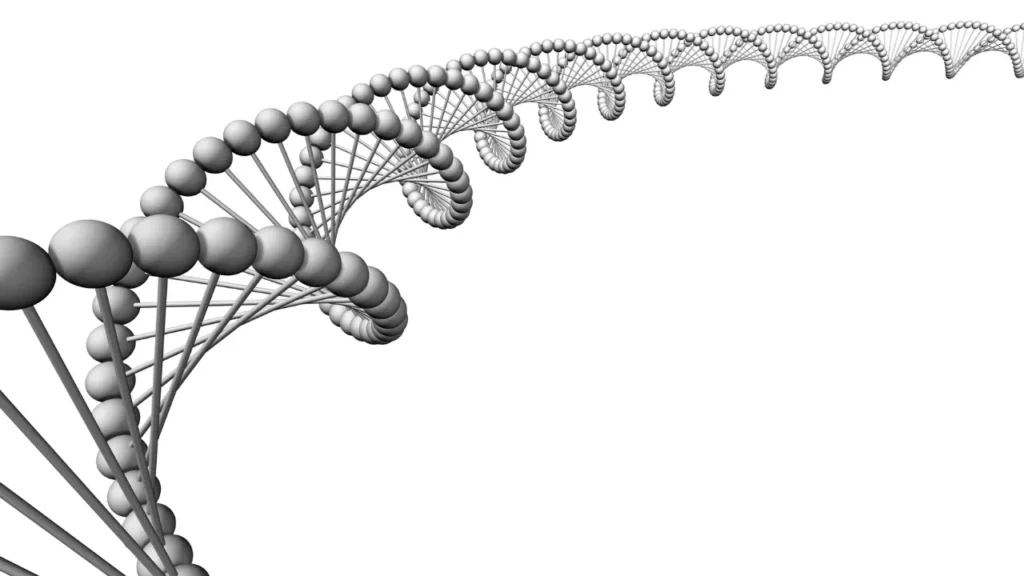Numerous nootropic supplements have been investigated in the pursuit of cognitive enhancement; among them, SESAME stands out for its potentially beneficial benefits on alertness, focus, and general cognitive function. Seleno-S-Adenosylmethionine, or SESAME for short, is a synthetic substance that has drawn interest from scientists due to its distinct mode of action and possible health advantages. This review includes examining SESAME’s composition, health advantages, recommended dosages, adverse effects, possible drug interactions, and safe SESAME use.
You May Also Like:
What Are the Best Mushrooms for Brain Health? Here Are the Facts.
5 Things to Consider When Choosing the Best Mushrooms for Mental Health
SESAME (Seleno-S-Adenosylmethionine): Benefits, Dosage, Side Effects, Drug Interactions, and Other Important Information is an original (NootropicsPlanet) article.
Nature of SESAME
A synthetic nootropic called SESAME (seleno-S-adenosylmethionine) is intended to improve cognitive performance and shield the brain from oxidative stress. It uniquely combines selenium’s antioxidant qualities and S-Adenosylmethionine’s (SAMe) methylation capabilities. In addition to promoting neurotransmitter production and regulation, which are critical for maintaining emotional equilibrium and cognitive function, this dual-action strategy protects against free radical-induced cellular damage. SESAME is a supplement that targets those who want to enhance their emotional health, mental clarity, focus, and learning ability. It may also provide neuroprotective advantages against age-related cognitive decline and neurodegenerative disorders.
Health Benefits of SESAME
The main attraction of SESAME is its ability to dramatically improve cognitive abilities such as memory, concentration, attentiveness, and general brain function. This effect may be due to its influence on the production and control of essential neurotransmitters. Different cognitive functions depend on neurotransmitters such as norepinephrine, serotonin, and dopamine; norepinephrine regulates attention and reacting actions, serotonin impacts mood and social behavior, and dopamine is linked to motivation and reward. SESAME can increase cognitive capacities by guaranteeing the appropriate production and activity of these neurotransmitters, which makes it a desirable choice for people looking to enhance their mental ability for personal, professional, or academic improvement.
Mood Regulation and Support
SESAME’s effects on neurotransmitter production are strongly linked to its benefits for mood regulation. The substance may stabilize mood and possibly alleviate symptoms related to mood disorders because of its ability to raise serotonin and dopamine levels. This potential mood regulation makes SESAME a compound of interest for studies looking at non-pharmacological treatments for illnesses like anxiety and depression since it may provide an additional treatment that promotes mental health and emotional well-being.
Neuroprotective Effects
The antioxidant qualities of SESAME have significant neuroprotective advantages in addition to improving cognition. One of SESAME’s main ingredients, selenium, is a potent antioxidant that helps to scavenge dangerous free radicals and lessen oxidative stress in the brain. In addition to being linked to the onset of neurodegenerative illnesses like Parkinson’s and Alzheimer’s, oxidative stress accelerates the aging process of neurons. By battling oxidative stress, SESAME may help prevent cognitive decline and maintain brain health over time.
Support in Neurodegenerative Conditions
SESAME may be able to help people with neurodegenerative diseases due to its neuroprotective and antioxidative qualities. The potential for SESAME to reduce oxidative damage and enhance neurotransmitter function may provide a supplemental strategy for treating the symptoms of neurodegenerative diseases, possibly delaying the course of the illness and improving quality of life. However, further research is required to fully understand its effects.
Antioxidant Benefits Beyond the Brain
Although the main focus of SESAME’s advantages is its neuroprotective and cognitive effects, its antioxidant qualities have broader effects on general health. Cardiovascular disease and some types of cancer are among the chronic illnesses associated with oxidative stress. Consequently, SESAME may have antioxidant benefits beyond mental health, strengthening the body’s defenses against free radicals and maybe lowering the chance of developing certain illnesses.

Chemistry of SESAME
SESAME (Seleno-S-Adenosylmethionine) is a novel addition to the nootropic supplement market because of its distinct chemical makeup, which combines selenium with S-Adenosylmethionine (SAMe). SAMe is an essential substance that occurs naturally in the human body and involves numerous methylation processes. The creation of phospholipids, neurotransmitters, and DNA methylation processes—all necessary for maintaining the integrity and functionality of cells—depends on these reactions.
Adding selenium to SESAME is a calculated improvement, utilizing selenium’s well-established antioxidant qualities. The combination results in a substance similar to SAMe, which engages in the methylation process and offers strong protection against oxidative stress. The pathogenesis of many neurodegenerative diseases and cellular aging are linked to oxidative stress. SESAME is distinct among nootropics due to its dual functioning, which is derived from its unique chemistry and provides both neuroprotective and cognitive-enhancing effects.
Physiological Mechanism of Action
SESAME mainly affects the brain’s antioxidant defense systems and methylation process, which impacts the body. SESAME is essential for producing and controlling neurotransmitters like dopamine, serotonin, and norepinephrine because it facilitates the donation of methyl groups. These neurotransmitters are critical in mood regulation, attention, alertness, and cognitive performance. Improving cognitive function and emotional stability requires effectively producing and managing these neurotransmitters.
Second, the selenium component of SESAME plays a major role in its physiological effect by bolstering the body’s antioxidant defenses. Glutathione peroxidase, an antioxidant enzyme essential for scavenging dangerous free radicals and lowering oxidative stress in the brain, requires selenium as a cofactor. This antioxidative effect protects against neurodegenerative disorders and cognitive decline by preserving neuronal integrity and function.
Moreover, SESAME plays a significant role in promoting DNA methylation. DNA methylation is an essential epigenetic method that modifies gene expression without changing the DNA sequence. The creation of long-term memories and neural plasticity depend on this process, suggesting that SESAME’s impact on methylation processes affects basic elements of learning and memory.

Optimal Dosage of SESAME
The ideal dosage must be established to maximize the benefits of SESAME and minimize any potential adverse effects. While dosage recommendations from studies have varied, a reasonable place to start is between 200 and 400 mg daily, ideally taken with meals to maximize absorption. Before beginning SESAME supplementation, people must speak with a healthcare provider. This is especially important in light of the wide range of individual reactions and possible drug interactions.
Side Effects of SESAME
When used within the suggested dosage range, SESAME is usually regarded as safe. Like any vitamin, though, some people may have adverse effects. Gastrointestinal discomfort, such as nausea and diarrhea, is common and usually goes away with prolonged use. Rarely, the supplement may cause more severe adverse effects that need stopping, like allergic responses or alterations in mood and sleep habits.
Potential Substance Interactions with SESAME
SESAME interactions with other drugs, in particular, need to be carefully considered. Because of its effect on neurotransmitter production, SESAME may interact with antidepressants, antipsychotics, and other drugs that alter brain chemistry. Furthermore, its methylation activity may change how well some medications work. Speaking with a healthcare professional to determine any possible interactions and modify dosages appropriately is essential.

Best Responsible Uses of SESAME
A thorough knowledge of SESAME’s characteristics, possible advantages, and hazards is necessary for its prudent use as a nootropic. If someone wants to take SESAME supplements, they should start with the lowest amount that works well for them and monitor how they respond. Taking breaks from supplementing to avoid tolerance and evaluate the long-term effects on cognitive function is also advisable.
Moreover, it’s critical to view SESAME as a component of a more comprehensive strategy for improving cognitive function that also involves a balanced diet, consistent exercise, and enough sleep. A comprehensive approach maximizes SESAME’s potential advantages while fostering general brain health and well-being.
SESAME:
Conclusion
SESAME presents a promising avenue for improving health and well-being, particularly in relation to mood disorders, liver health, and joint function. Extensive research suggests its efficacy in alleviating symptoms associated with conditions such as depression, osteoarthritis, and liver disorders. SESAME’s multifaceted mechanisms of action, including its role as a methyl donor and involvement in various biochemical processes, underscore its potential therapeutic benefits.
However, despite the compelling evidence supporting SESAME’s health benefits, further research is needed to elucidate its full range of effects, optimal dosages, and long-term safety profile. Additionally, individual variability in response to SESAME supplementation highlights the importance of personalized approaches to healthcare. Incorporating SESAME into clinical practice holds promise of enhancing treatment outcomes and improving the quality of life for individuals affected by mood disorders, joint issues, and liver diseases. Nevertheless, healthcare providers should exercise caution and consider factors such as patient suitability, potential drug interactions, and overall health status when recommending SESAME supplementation. Continued investigation into SESAME’s therapeutic potential will contribute to its broader utilization and optimization in clinical settings

References:
- Selenium-based S-adenosylmethionine analog reveals the mammalian seven-beta-strand methyltransferase METTL10 to be an EF1A1 lysine methyltransferase. Retrieved from:https://pubmed.ncbi.nlm.nih.gov/25144183/
- An Essential Role of S-Adenosyl-l-Methionine. Retrieved from: https://www.ncbi.nlm.nih.gov/pmc/articles/PMC166611/
- Metabolism of selenite to selenosugar and trimethylselenonium in vivo: tissue dependency and requirement for S-adenosylmethionine-dependent methylation. Retrieved from: https://www.sciencedirect.com/science/article/abs/pii/S0955286313001447
Important Note: The information contained in this article is for general informational purposes only, and should not be construed as health or medical advice, nor is it intended to diagnose, prevent, treat, or cure any disease or health condition. Before embarking on any diet, fitness regimen, or program of nutritional supplementation, it is advisable to consult your healthcare professional in order to determine its safety and probable efficacy in terms of your individual state of health.
Regarding Nutritional Supplements Or Other Non-Prescription Health Products: If any nutritional supplements or other non-prescription health products are mentioned in the foregoing article, any claims or statements made about them have not been evaluated by the U.S. Food and Drug Administration, and such nutritional supplements or other health products are not intended to diagnose, treat, cure, or prevent any disease.


